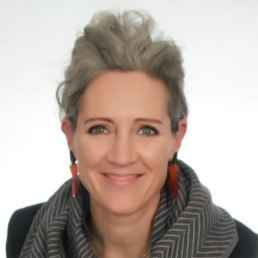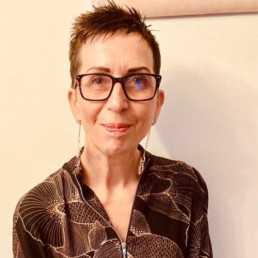Switching on the local talent resource in international schools.

Written by Laura Mitchelson
Laura is a freelancer helping schools in Retention and Engagement. Previous roles include Director of Enrollment and Communications at Dwight School Hanoi, Impact and Innovation Unit Advisor at Qibao Dwight High School, Secondary Language Teacher at Millfield School.
According to the OECD’s Teaching and Learning International Survey (TALIS) 2018, the average annual professional development hours for teachers internationally is around 62 hours per year. Some would argue it should be more, some might debate the value of some of that PD but it’s there.
In other industries like healthcare, retail, finance, banking, IT and telecoms, the average number of hours of professional development received each year is also about 60 hours but there is one difference – in those industries, it doesn’t matter which part of the organisation you are from, you have access to the same amount of professional development – it might depend on how long you have been with the business or what level you are at, whereas in the international school sector, teachers almost always have access to many more hours of PD than their colleagues in the business management side of the school do.
When will Finance, IT, HR and Operations teams be given the same access to professional development and learning support as their teacher peers?
There is a lot to consider here – it is the road less travelled, so proceeding with caution makes sense. To start requires us looking at THREE things:
- What are the existing professional qualifications that school management team staff have? Are Finance Directors ACCA certified? Does the HR Manager have an SHRM certification? Does the IT Director have the CITM? Do school leaders and governors know these accreditations and their issuing bodies well enough to assess candidates at interview stage in these professions and does the school look for these at the recruitment stage?
- When, how and what should make up the professional development that these management team staff receive once they are at a school? Is there a career growth pathway, planned support for professional growth, where does the budget come from?
- Where can teaching and non-teaching staff come together in professional development? Soft skills development with a focus on areas like team leadership, project management, budgeting, running effective meetings, and reporting are all areas of growth that are common to educators and business managers.
By developing ALL staff, schools respect both the notion of professional growth in general, and allow these school management professionals to be seen on a level with the wonderfully qualified and heavily professionally developed teaching staff. It is appropriate and right that we shine a spotlight here.
Schools have a wide variety of options available to them when they embark on the professional development of their school business management teams. Here are some approaches that can be considered depending on the stage and needs of the individuals and teams in place:
- Internal or External Mentoring
- Coaching
- Shadow Days
- Language Lessons
- Observations
- Internal/External Training
- Online study
- Master’s Degree support
- On-the-job training
- Industry body membership
- Conference attendance
- Career Mapping
- High quality appraisals
- 360 appraisals
- Job rotation
- Internship programs
- Group coaching
- E-learning
- In-house workshops
- Day release to further education
- Supported Local/virtual networking
- Employee wellness programs
With a pay disparity between international teachers and those, often local staff, who work in ‘support’ roles like IT, Admin, HR, Finance and Operations, divisions and rifts can form, and by actively supporting the professional growth of those who work in these functions, schools can reap significant benefits in the areas of school reputation, retention, cross-departmental collaboration, and organisational resilience.
There is room for much more discussion of this topic in the coming years.
My Experience as a Speaker at the Diverse Educators Conference in Scotland: A Step Towards Change

Written by Sadia Hussain-Şavuk
Sadia Hussain-Şavuk, originally a Biology teacher, is now a Diversity, Equality and Inclusion Lead working predominantly with schools within the independent sector providing teacher training, pupil workshops and consultancy in her main area of anti-racism. In addition to this she sits on a number of boards including the BSA/IELA Inclusion Advisory Board and is co-chair of the Curriculum Reforms workstream of the Anti-Racism in Education Programme.
In February, I had the incredible honour of speaking at the inaugural Diverse Educators Conference in Scotland. As the first event of its kind, the conference was a bold and inspiring step towards promoting inclusivity, representation, and meaningful change within education. The atmosphere was charged with energy, optimism, and a deep-seated belief in the power of education to shape a better future for all.
The Power of Positivity
One of the most striking things about the conference was the positivity and passion that the participants brought to the table. Educators from across Scotland, with diverse backgrounds and experiences, gathered together not only to share their ideas but to spark action. There was a sense of unity and purpose that made the event feel more like a movement than a typical conference. As I stood before such an engaged audience, it was incredibly reassuring to see how committed these educators were to making positive changes in their schools, classrooms, and communities. Whether it was promoting inclusivity in the curriculum, advocating for equitable opportunities, or fostering a more diverse learning environment, it was clear that the educators in the room were not just talking about change – they were living it. It’s moments like these that remind me why I became an educator in the first place: to make a difference. And seeing so many others who share that same drive was truly inspiring.
The Challenges We Still Face
Despite the immense positivity, there was an undercurrent of concern that stayed with me throughout the conference. While we celebrated the progress that has been made and the steps that are being taken to make education more inclusive, we cannot ignore the slow pace of change. It is difficult to not feel a sense of frustration when you consider how far we still have to go. Although there are pockets of progress, systemic barriers persist. In many schools, diverse perspectives are still sidelined or tokenised. Too often, young people with marginalised identities still face barriers to success, whether that be in terms of representation, access to resources, or the recognition of their unique challenges. As educators, we know that it’s not enough to simply raise awareness. The real work lies in creating long-term, sustainable change. But when progress is slow, it feels as though we are failing the very students we are meant to serve. The young people of today – those who will shape our tomorrow – are waiting for us to do better. And while I am hopeful for the future, it’s hard to ignore the gap between where we are now and where we need to be.
A Call to Action
The Diverse Educators Conference served as both a celebration of what’s been achieved and a reminder of the work that remains to be done. I left the event with a renewed sense of purpose, but also a deeper understanding of the urgent need for change. As educators, we must keep pushing the boundaries of what is possible. We must continue to challenge the status quo and demand that every child, regardless of their background, has access to a truly equitable education. We cannot afford to wait for change to happen on its own – we must be the ones to make it happen. The diversity, passion, and commitment I witnessed at the conference filled me with hope, but I also know that it will take all of us – working together, side by side – to ensure that the next generation of students can thrive in an educational system that fully supports their needs and potential. In the end, the Diverse Educators Conference wasn’t just a moment of celebration – it was a call to action. It was a reminder that our work is far from over, and that every step we take towards inclusivity and equity is a step closer to a brighter future for all. Let’s not rest until that future becomes a reality.
Developing Cultural Intelligence in Education: A Necessity for School Leaders

Written by Hannah Wilson
Founder of Diverse Educators
Cultural intelligence (CQ) is the capability to relate and work effectively across different cultures, backgrounds, and situations:
- Understanding cultural norms: Understanding how cultures influence values, beliefs, and behaviors
- Adapting to different cultures: Being able to work and relate with people from different cultures
- Making informed judgments: Using observations and evidence to make judgments in new environments
The concept of Cultural Intelligence was introduced in 2003 by London Business School professor P. Christopher Earley and Nanyang Business School professor Soon Ang.
In today’s increasingly diverse educational landscape, it is imperative for educators and school leaders to understand and cultivate CQ. This ensures not only the inclusion and success of all students whilst fostering a rich, diverse learning environment, but it is of equal importance to our staff to feel part of an inclusive workplace which prioritises belonging for all stakeholders.
Why Cultural Intelligence Matters
- CQ Enhances Inclusivity and Equity: CQ allows educators to recognise and value the diverse cultural backgrounds of their students and staff. This leads to more equitable teaching practices and policies that support all students and staff, irrespective of their identity.
- CQ Supports Recruitment and Retention: CQ promotes a commitment to belonging. Culturally intelligent employers, workplaces, leaders and teams will support the recruitment and more importantly the retention of people with diverse identities. CQ enables everyone to flourish and thrive.
- CQ Improves Student Engagement and Achievement: Students are more engaged and perform better when they feel understood and respected. Culturally intelligent educators can tailor their teaching methods to meet the diverse needs of their students, thereby enhancing learning outcomes.
- CQ Strengthens School Community: A culturally intelligent school promotes a sense of belonging among students, staff, and parents/carers. This strengthens the school community and encourages collaboration and mutual respect.
- CQ Prepares Students for a Globalised World: By fostering CQ, schools prepare students to thrive in a globalised world where cross-cultural interactions are the norm. This is essential for their future personal and professional success.
How to Apply the CQ Model
I use the CQ framework when I am working with school, college and trust leaders to shape their DEIB strategy:
- Stage 1: CQ Motivation – what is ‘our why’ for developing Cultural Intelligence and how are we communicating it to all stakeholders?
- Stage 2: CQ Knowledge – what data do we have/ need and how are we using it to inform our journey?
- Stage 3: CQ Strategy – what resources do we need, what milestones will we set and how will we evaluate our impact?
- Stage 4: CQ Action – what training is needed, what actions do we need to take and what behaviours do we want to change?
It is a simple but effective approach and helps leaders who are new to DEIB to get their heads around the cyclical process of shaping a strategy to improve the culture for everybody to flourish and thrive. It is also a core them in our Leading DEIB in Schools programme.
Developing Cultural Intelligence
CQ for School Leaders
- Self-Assessment and Reflection: Reflection to understand our own cultural biases and areas for growth. Tools like the Cultural Intelligence Scale (CQS) can be useful.
- Professional Development: Engaging in ongoing professional development focused on cultural competence and CQ is crucial. Training can provide valuable insights and strategies, as can curated reading. Check out the resources in our CQ toolkit.
- Leading by Example: Demonstrating CQ in interactions and decision-making sets a precedent for the entire school. Leaders should model behaviours that reflect cultural understanding and sensitivity. Leaders should also consider methods of communication and how inclusive language choices are.
CQ for Educators
- Ongoing Professional Development: Organising regular training sessions on cultural competence and CQ can help staff develop the necessary skills. Sessions should be interactive and challenging, an ongoing conversation instead of one-off training events. We can facilitate a space to explore a range of different themes.
- Inclusive Curriculum Development: Encouraging teachers to incorporate diverse perspectives and materials into their curriculum expands our knowledge of others. This not only broadens students’ horizons but also shows respect and develops awareness of different cultures. Find out more from our Diversifying the Curriculum toolkit.
- Mentorship and Collaboration: Fostering a culture of mentorship and collaboration where educators can share best practices and learn from each other’s experiences with diverse communities. Reverse mentoring can be a helpful tool to create a knowledge exchange, find out more in our webinar with RVP.
CQ for Whole School
- Inclusive Policies and Practices: Developing and implementing school policies that promote inclusivity and equity. This includes everything from admission policies to behaviour consequences, from interview processes to appraisals, ensuring they are fair and culturally sensitive.
- Student and Parent/ Carer Engagement: Creating platforms for meaningful engagement with students and parents/ carers from diverse backgrounds. This could include cultural events, forums, and regular communication channels for feedback such as surveys and focus groups.
- Diverse Representation: Striving for diverse representation among staff and leadership. This not only brings varied perspectives but also demonstrates a commitment to diversity and inclusion.
Conclusion
Cultural Intelligence is no longer optional in the realm of education—it is a fundamental competency:
- We need culturally intelligent schools and workplaces.
- We need culturally intelligent policies and processes.
- We need culturally intelligent leaders and educators.
- We need culturally intelligent classrooms and staffrooms.
At Diverse Educators we frame all of our training through the 3 Cs of Consciousness, Confidence and Competence. By becoming more conscious of who we are, of our own lived experience and how it shapes our world view, we can become more confident in how we interact with others, in our inclusive behaviours and our inclusive language. We can then become more culturally competent and develop cultural intelligence. School leaders and educators who develop and promote CQ contribute to an inclusive, equitable, and dynamic learning environment for students and staff alike. By prioritising Cultural Intelligence, schools can better serve their diverse populations, better prepare students to succeed in a globalised society and better support staff in their career progression and leadership development.
***********************************************************
If this theme resonates and is of interest, we have a training opportunity in January 2025. Join us for the CQ (Cultural Intelligence) Certification. There are limited places available so they will be allocated on a first-come-first-served basis.
How My Experiences with ADHD in Different Workplaces Led to a PhD and Training Programmes for Businesses and Schools

Written by Steve Ollington
ADHDer studying the pros and cons of ADHD in the workplace, with 19 years in digital marketing, and more recently running ADHD training.
I’m Steve Ollington, and I’m currently undertaking a PhD at Swansea University, supervised by Professor Brian Garrod, focusing on ADHD in the workplace. My research journey started with a personal observation: despite having a consistent skill set and high level of experience in my profession, I noticed that my performance varied significantly depending on the workplace environment. In some settings, I thrived; in others, I struggled to achieve the same level of productivity and job satisfaction. This discrepancy led me to examine how different workplace environments interact with ADHD traits, not just in terms of challenges, but also in enabling the often-overlooked strengths associated with ADHD.
Observing the Role of Environment in My ADHD Performance
In some roles, I was given autonomy and flexibility, which allowed me to excel. I had the freedom to approach tasks creatively, was trusted by managers, and felt supported by colleagues who understood different thinking styles. In these settings, I could harness the strengths that come with ADHD, for example innovative thinking and alternative (but effective) problem-solving. My performance was high, and I felt truly engaged in my work.
In other workplaces, however, I encountered rigid structures and strictly enforced processes with little flexibility. There was often limited understanding of alternative approaches to work, and I felt pressured to conform to methods that didn’t align with how I function best. This rigid structure amplified the challenges of ADHD, while stifling my ability to bring my strengths to the forefront. In these environments, I found myself struggling as a result.
Recognising the Potential of ADHD Strengths in the Workplace
Through these contrasting experiences, I realised that while my ADHD challenges remained constant, my ability to utilise my strengths was significantly influenced by the environment, including the acceptance of my differences by those around me. Some workplaces allowed me to maximise my capabilities, while others hindered them. This insight led me to pursue a PhD, focusing on ADHD in professional environments. Rather than just examining the difficulties faced by ADHD employees, I wanted to highlight the strengths and explore the specific workplace conditions that either foster or inhibit these strengths.
Research supports the notion that ADHD brings unique strengths. Dr Heiner Lachenmeier’s book ADHD and Success at Work, for instance, describes how people with ADHD often have a “wider breadth of association” due to a reduced filtering of incoming information, which enhances creativity and problem-solving abilities.
Research by Dr Nancy Doyle on neurodivergence in the workplace, combined with studies on creativity and imagination by White and Shah demonstrate that ADHD individuals can excel in environments that embrace cognitive diversity. Creativity, for instance, is often heightened in ADHD individuals due to the way they process information, thinking beyond traditional boundaries. However, these strengths can only be fully realised in workplaces that are flexible, supportive, and open to alternative working styles.
Dr Edward Hallowell also discusses this in his book Driven to Distraction at Work, noting that ADHD can fuel high energy, hyperfocus, and enthusiasm when supported in the right way. Additionally, Prof Amanda Kirby and Theo Smith, in The Power of Neurodiversity at Work, as well as Leanne Maskell in ADHD Works at Work, advocate for environments that understand and embrace neurodiversity, highlighting the benefits employees with ADHD can bring to the workplace.
Developing Targeted ADHD Training Courses
This studying inevitably led to increasing my own understanding of ADHD and its impact on my work, and the more I learned, the more it became evident that many workplaces lack the necessary understanding and support for neurodivergent employees. Despite increased emphasis on diversity and inclusion, neurodivergence (including ADHD) is still very often misunderstood, with much of the current training being very broad and general, not focusing enough on individual conditions. I saw, and experienced, the need for specific training to address not only the challenges but also the strengths associated with ADHD, and the resulting understanding from workplace peers who might have neurotypical only expectations of skills like communication and approaches to tasks.
This realisation led me to transform my PhD literature review into two targeted training courses. The first course is designed for businesses, specifically aimed at training managers, HR, and colleagues of people with ADHD, focuses on understanding ADHD from a balanced perspective, covering how ADHD employees think differently, the areas in which they may need support, and how workplaces can harness their unique strengths. It encourages flexibility, trust, and space for creativity, which are key to enabling ADHD employees to thrive.
The second course is geared towards educators, providing ADHD training for teachers, TAs, and SEN staff, to equip them with the knowledge to reassure ADHD children and teenagers on how ADHD doesn’t have to limit them as they grow up, and that in fact they their ADHD also brings strengths, such as creative thinking and resilience. By emphasising these positive traits, educators can help ADHD students see their future as one filled with potential and opportunity.
How to lead a diversity research group

Written by Jayne Carter
Jayne is the Director of Ignite Education Ltd, providing consultancy for practitioners within the Early Years & Primary sector. She uses coaching a a model for change, facilitating professional conversations which are focused on empowering others & generating growth in knowledge & skills.
As part of the L.E.A.D Teaching School Hub’s extensive offer for EDI, I was invited to lead a diversity research group based on Bennie Kara’s fantastic book: Diversity in Schools. This blog is intended to support others who may wish to run similar groups for teachers and school leaders.
The research group was structured around one session per month for each book chapter. It worked well for each participant to read the focus chapter in preparation for the meeting, to be ready to discuss their reflections and implications for their own practice.
Discussions were facilitated around the key messages included in each chapter with the addition of extra resources focused on the needs of the group.
The aims of the research group included:
- To use research & literature as a tool for school improvement
- To develop a culture of peer-to-peer support & critical analysis
- To implement key strategies & approaches at a whole school level
Some of the attendees wanted to focus on whole school implementation, whereas others wanted to improve their own subject knowledge in preparation to share at school.
Each session included a planned gap task based on the focus of the chapter as well as an individual gap task which was identified by each attendee in order to meet the needs of their school.
For example, the third session focused on the chapter ‘How can we create a diverse classroom?’ Everyone carried out the audit included in the book. Individual gap tasks that were chosen included;
- sharing UNESCO inclusion research with members of their SLT
- exploring the free trial of Lyfta as a whole-school EDI resource
- considering how to organise their seating plan to ensure inclusivity
- evaluating the use of cold calling/trio conversations in their classrooms.
Time was planned into the following sessions to discuss reflections from the individual gap tasks and all resources were included in a workgroup padlet. The padlet worked well to ensure that everyone had constant access to key resources/research. It also provided an effective means of communication between meetings.
Being able to meet frequently with attendees helped me as a workgroup lead to understand the priorities for each school and what was important to them. As the meetings progressed, I was able to structure the sessions to become even more personalised to the group’s needs, with additional research and tools being shared and added to the padlet.
Over the seven sessions, attendees enhanced their EDI improvement plan or developed their own EDI plan. The next steps identified after each chapter supported these improvement plans by providing structure and focus.
During the final session the overall impact of and reflections about the workgroup were collected:
- All attendees found the structure of the workgroup useful as it moved from a training session to meetings which were collaborative and supportive of an action research improvement model.
- Attendees liked the planned gap tasks; especially the opportunity to carry out a shared task, which helped shared discussions but also a gap task which was personalised and prompted change at a school level.
- All attendees noted that the additional resources sourced and added to the padlet were valuable with everyone committing to using the padlet next academic year.
As the workgroup lead, the opportunity to guide attendees into analysing research was valuable as it gave me a useful reminder of day-to-day school priorities. One of my own personal outstanding reflections was the knowledge that the plans developed would be sustained as they had been developed carefully and with the vision of not only what needed to be in place but why.
My thanks to Bennie Kara for creating such an accessible and informative book. I hope that this blog encourages others to lead more reading groups or research groups on diversity in schools across the sector.
LGBTQ+ teachers don’t receive the training and support they need

Written by Dr Adam Brett
Adam has completed a doctorate exploring the experiences of LGBT+ secondary teachers. A presentation of his findings can be found here. He also co-hosts a podcast called Pride and Progress, @PrideProgress, which amplifies the voices of LGBT+ educators, activists and allies.
Originally posted on The Conversation in May 2024:
https://theconversation.com/lgbtq-teachers-dont-receive-the-training-and-support-they-need-228162
Republished with permission of the author.
LGBTQ+ teachers report feeling stressed and even discriminated against in the workplace due to their identity. This is a problem when keeping teachers in their jobs is vital. Teaching is facing a crisis in both recruitment and retention: in 2021-22, more than 39,000 teachers quit the profession.
But there is no formal support or training offered to LGBTQ+ teachers by the Department for Education. Supporting the teaching workforce who identify as LGBTQ+ and making teaching a welcoming profession should be a priority for the government.
For LGBTQ+ teachers, working in UK schools may no longer be the deeply traumatic and dangerous experience it was under Section 28 of the 1988 Local Government Act, which was repealed in 2003. This law sought to ban local authorities and their schools from promoting the acceptability of homosexuality as a “pretended family relationship”.
But LGBTQ+ teaching staff continue to face challenges such as feeling unsafe in their workplace.
Throughout their careers, LGBTQ+ teachers are placed in the difficult position of deciding whether they should conceal or reveal their sexual or gender identity. This is not a decision they are trained to deal with, nor a decision they make just once. It is particularly tricky in schools where teachers must decide if, when, and how to be open with different groups – staff, students, parents, and others involved in school life.
As an LGBTQ+ former teacher, I know first-hand the emotional tax that comes with continuously negotiating LGBT+ visibility and identity within school.
Unsafe spaces
For my doctoral research I worked with 12 LGBTQ+ teachers from a variety of contexts, including faith, private, and single sex schools. The teachers took photos to represent the spaces where they felt most and least safe within their school, and described the significance of their photos.
The teachers changed how they behaved out of fear of being seen as LGBTQ+. They did this in particular in open or visible spaces, such as when on break duty, leading an assembly or in the staffroom.
In these spaces, the LGBTQ+ teachers were fearful of comments or incidents related to their identity that they felt unequipped to deal with. One teacher said:
I give my assemblies quite often, and I don’t hide my sexuality from anybody, so the student body knows that I’m gay … but when I’m doing my assemblies I feel, I feel scared and I don’t know if it’s because I know that they know that I’m gay and therefore, I’m like afraid of them … I don’t know hurling a slur or something.
By contrast, the teachers often described their classrooms as the spaces where they felt most safe. Here, they had created their own routines, relationships and systems.
Among the 12 participants, there were teachers who had been told not to discuss their sexual or gender identity. One teacher told me that they and others had been asked to sign a non-disclosure agreement in a Catholic school: “We weren’t allowed to talk about the fact [that we were gay],” they said.
These are extreme examples. Generally, though, the assumption of heterosexuality in schools can lead to personal questions and situations that LGBTQ+ teachers often feel unequipped to deal with.
Cisgender and heterosexual teachers might be asked about their partners and families and would feel no fear of retribution or backlash in answering those questions. But what might be an entirely unremarkable conversation for a heterosexual teacher might well be deeply fraught for an LGBTQ+ teacher. This can be understood as “heterosexual privilege”.
Despite thousands of the teacher workforce identifying as LGB+, they receive no formal support or training for the challenges that they are likely to experience in their career. Sending LGBTQ+ teachers into schools without adequate support or training will probably lead to these teachers experiencing discrimination and stress.
Some teacher training providers ensure that trainees from minority backgrounds receive training and support to help them face the additional barriers they may experience in schools. However, implementation remains inconsistent.
Future reforms to the Initial Teacher Training and Early Career Framework, which outlines the minimum entitlement for trainee and early career teachers, must reflect these challenges to ensure a minimum and equitable level of provision for LGBTQ+ teachers. If they don’t, fewer LGBTQ+ teachers will enter or remain in the profession. Students and families won’t see themselves represented, and young people won’t be equipped for life in a diverse society.
LGBTQ+ people have the potential to make exceptional teachers and leaders. With the right support, they can thrive in the profession and provide young people with the role models that they desperately need.

